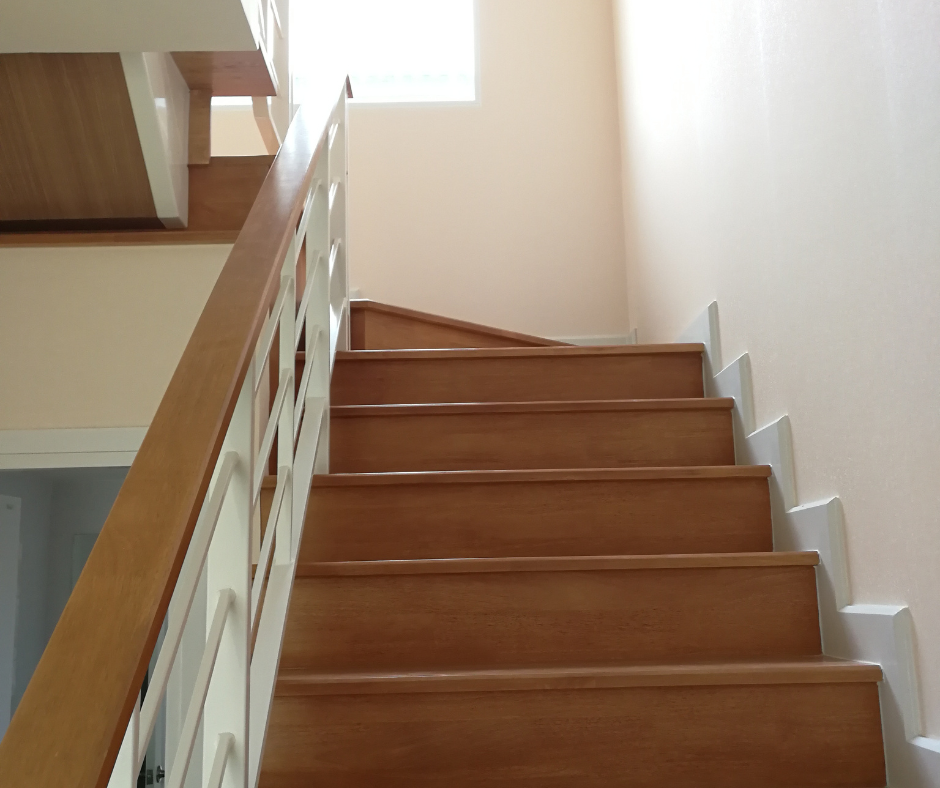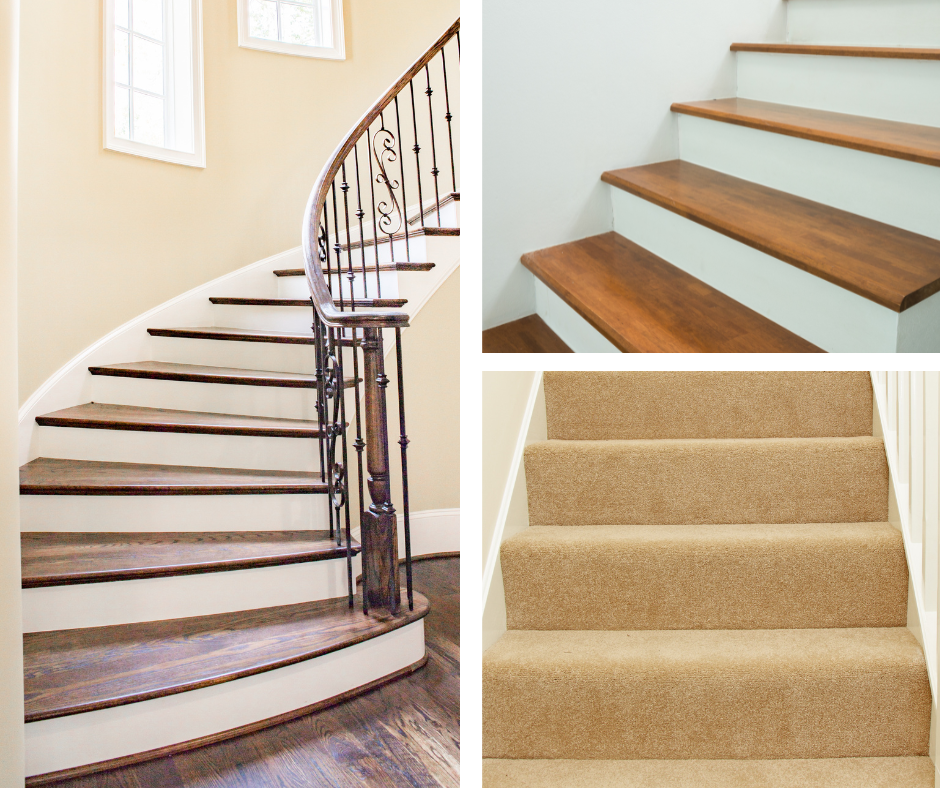Imagine walking down a dimly lit staircase—one small slip could lead to a serious fall.
So, are stair nosings required?
Yes, stair nosings are often required by building codes, especially in commercial and public spaces, because they improve safety by adding grip and making stair edges more visible.
In this guide, you’ll learn why stair nosings matter for all types of staircases, from those with thick carpet stair treads to those with hardwood or tile, the building codes that apply, and how they can protect both your stairs and the people using them.
Keep reading to discover how stair nosings can enhance safety, durability, and even the look of your staircase.
What's the Deal with Stair Nosings?
Stair nosings are the parts of the step that slightly stick out.
They come in different materials like wood, metal, or rubber.
You can use them on carpeted, wooden, or concrete stairs.
Our carpet stair treads come with built-in nosings, making them easy to install.
The type of material you choose can impact both the durability and the appearance of your stairs.
For example, metal nosings are great for commercial spaces due to their strength, while wooden nosings offer a warm, classic feel for homes.
Do Stairs Have to Have a Nose?
Stair nosings aren’t just for looks—they’re often required by building codes to keep people safe.
The International Building Code (IBC) says many types of buildings must have stair nosings.
Here’s why:
-
Safety: Stair nosings add grip and make stair edges more visible, which helps prevent accidents.
-
Durability: They protect the edges of the stairs from wearing out, keeping them in good condition longer.
In some cases, failing to comply with building codes can result in fines or the need for costly renovations.
Additionally, stair nosings can be crucial in emergency situations, where clear visibility of steps can prevent injuries during quick evacuations.
What Is the Code for Stair Nosings?
The rules for stair nosings depend on where you live and the type of building. Common rules include:
-
How Far They Stick Out: Nosings should extend between 0.75 inches and 1.25 inches from the step.
-
Rounded Edges: The edge should have a rounded corner with a radius no larger than 0.5 inches.
-
Non-Slip Material: Nosings should be made with or covered in non-slip material.
-
Consistency: All nosings on the same staircase should be the same size to prevent tripping hazards.
Understanding these codes helps ensure your stairs are safe and legal, reducing liability risks if someone gets hurt.
It’s also a good idea to consult local building authorities, as codes may differ slightly based on your region or building type.
Do Domestic Stairs Need Nosing?
At home, stair nosing requirements depend on local building codes.
Even if they’re not required, adding stair nosings is a smart choice.
Here’s why:
-
Safety: Stair nosings help prevent slips and falls, just like in public spaces.
-
Appearance: They give your stairs a neat, finished look.
-
Protection: They help prevent the edges of stairs from getting damaged over time.
Installing stair nosings in homes with children, elderly family members, or pets can add an extra layer of protection against accidents.
They also come in a variety of colors and textures, allowing you to enhance the aesthetic appeal of your staircase while keeping it functional.
Carpet: Can You Do Stairs Without Nosing?
You can have carpeted stairs without nosings, but it’s usually not the best idea.
Here’s why:
-
Wear and Tear: Carpet on stairs without nosings can fray and wear out faster.
-
Safety Risks: Without nosings, the carpet edges might lift, becoming a tripping hazard.
-
Neat Look: Stair nosings make carpeted stairs look clean and professional.
Over time, replacing worn-out carpet edges can become expensive, while stair nosings help extend the carpet’s lifespan.
They also help keep the carpet securely in place, reducing the need for frequent maintenance or adjustments.
Why Stair Nosings Are a Good Idea
Stair nosings offer a lot of benefits, making them a great choice for any staircase:
-
Safety: They provide a non-slip surface that helps prevent falls.
-
Visibility: They make the edges of steps easier to see, especially in dim lighting.
-
Long-Lasting: They protect your stairs from damage, helping them last longer.
-
Code Compliance: They help make sure your stairs meet local building codes and safety standards.
In addition to safety, stair nosings can improve the value of your home by giving your stairs a more polished and professional look.
They also reduce noise when people walk up and down the stairs, which is especially helpful in multi-level homes or apartment buildings.
Steps To Success
Stair nosings are a smart addition to any staircase, whether at home or in a commercial building.
They improve safety, protect your stairs, and add a polished look.
Even if building codes don’t require them, stair nosings are a good investment because of the safety and durability they provide.
When choosing stair nosings, consider both the functional benefits and how they fit into your home’s overall design.
Investing in quality stair nosings today can save you money on future repairs while providing peace of mind for your family’s safety.
Ready to Improve the Safety and Style of Your Stairs?
At Oak Valley Designs, we make it easy to upgrade your staircase with high-quality carpet stair treads, landings, and hallway runners designed for both safety and style.
Whether you're looking to prevent slips, protect your stairs from wear, or simply refresh your home’s look, we’ve got you covered.
Our products are designed to be simple to install, durable, and available in a variety of styles to match your home’s décor.
We’re here to help you find the perfect solution for your staircase, no matter your needs.
Get in touch with us today to find the right fit for your home:
-
Website: https://oakvalleydesigns.com/
-
Phone: 706.331.0315
-
Email: info@oakvalleydesigns.com
-
Address: 30 River Ct SW Bldg E, Cartersville, GA 30120
Let Oak Valley Designs help you create a staircase that’s as safe as it is stylish.




